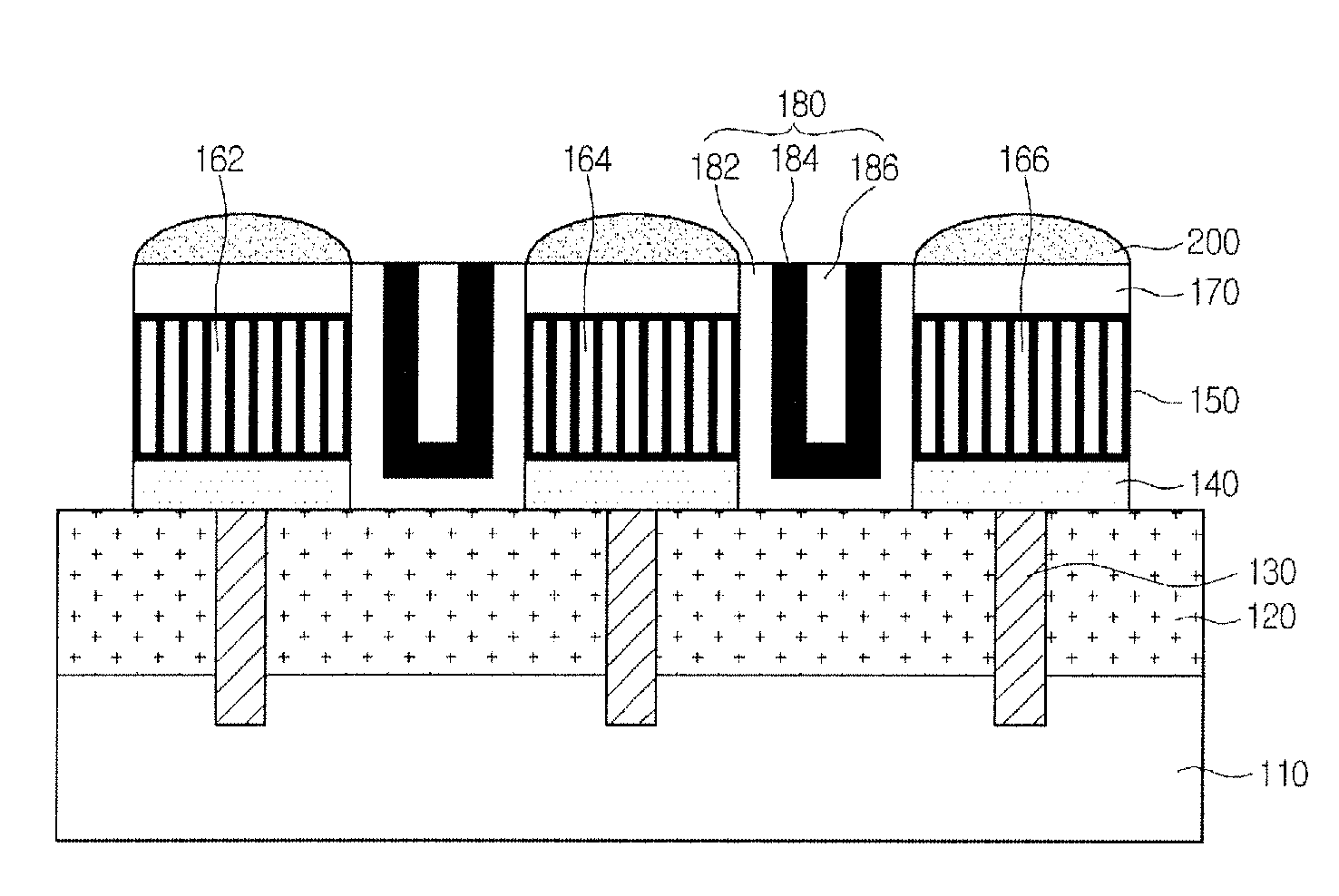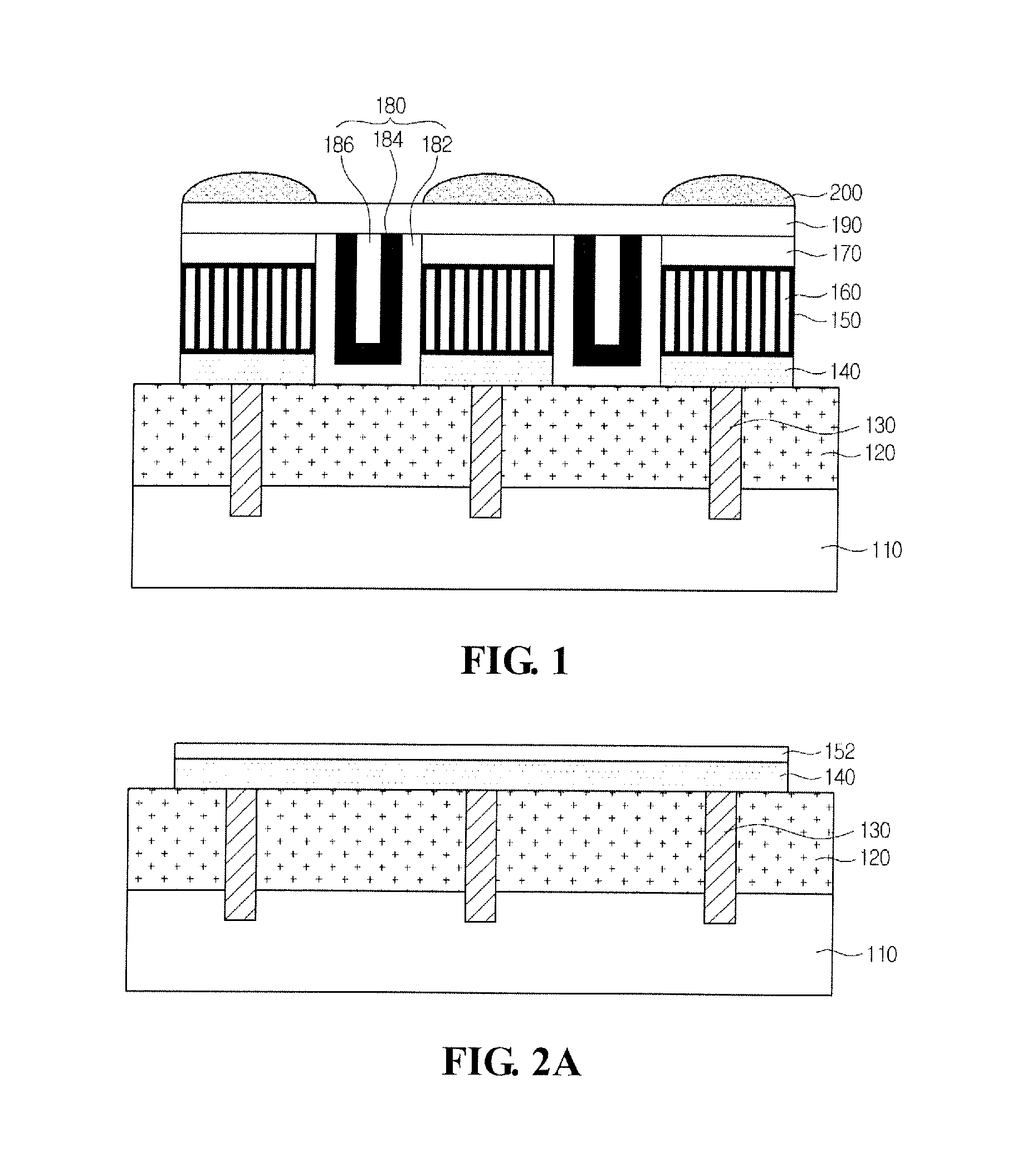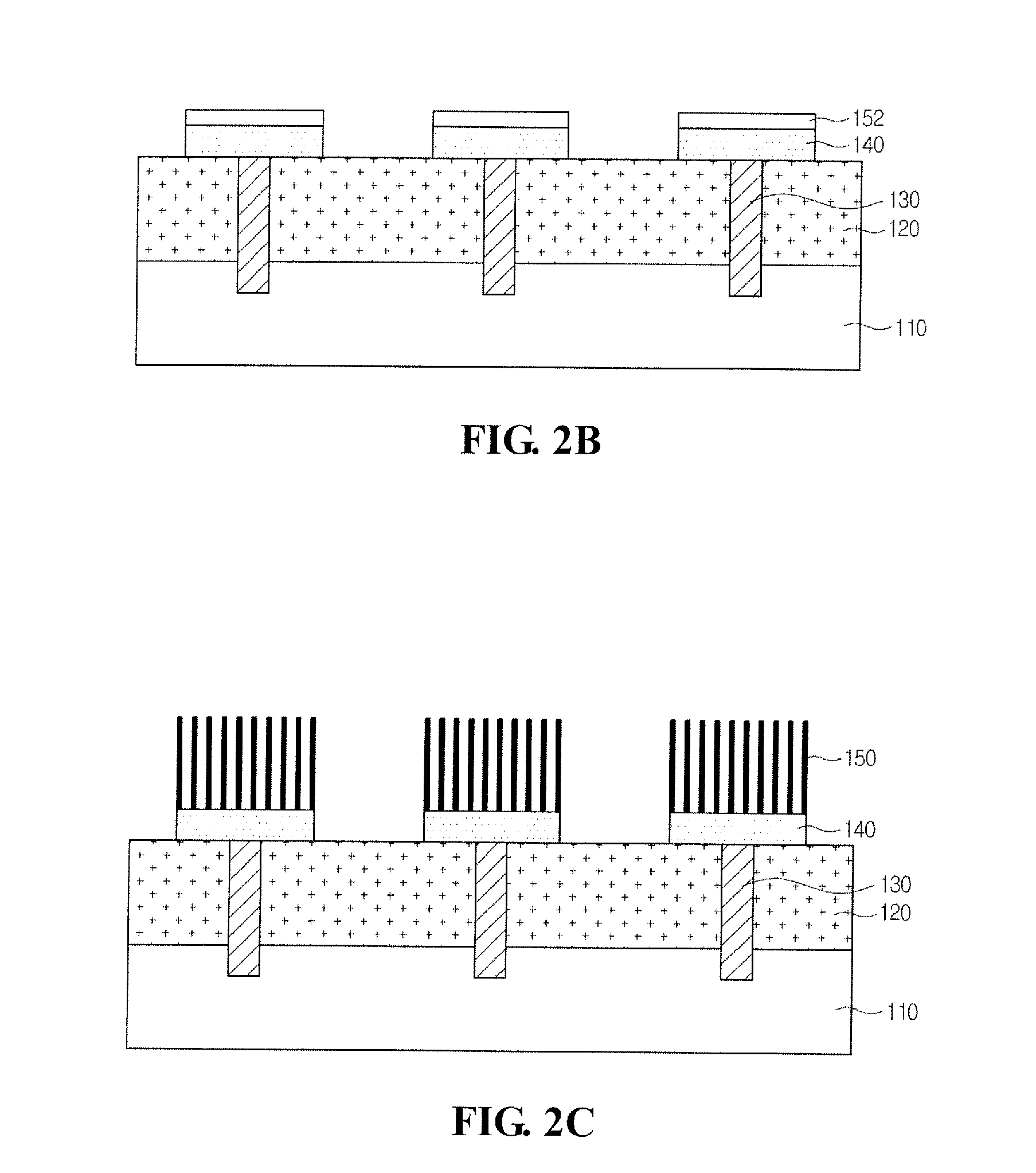Image Sensor and Method for Manufacturing the Same
a technology of image sensor and manufacturing method, which is applied in the field of image sensor, can solve problems such as difficulties in optimizing the manufacturing process, and achieve the effects of improving resolution and sensitivity, reducing manufacturing costs, and reducing manufacturing costs
- Summary
- Abstract
- Description
- Claims
- Application Information
AI Technical Summary
Benefits of technology
Problems solved by technology
Method used
Image
Examples
second embodiment
[0056]FIG. 3 is a cross-sectional view showing an image sensor according to a
[0057]The image sensor according to the second embodiment can employ the basic characteristics of the image sensor according to the embodiments described above.
[0058]However, in the image sensor according to the second embodiment, the carbon nanotubes 150a can be doped with a second conductive-type material. According to certain embodiments, a first conductive-type conductive layer 210 can be formed on the lower interconnection 140, and the second conductive-type carbon nanotubes 150a can be formed on the first conducive-type conductive layer 210.
[0059]In one embodiment, the first conductive-type conductive layer 210 can include n-doped amorphous silicon. However, embodiments are not limited thereto.
[0060]According to certain embodiments, the first conductive-type conductive layer 210 includes, but is not limited to a-Si:H, a-SiGe:H, a-SiC, a-SiN:H, or a-SiO:H obtained by adding germanium, carbon, nitrogen,...
third embodiment
[0063]FIG. 4 is a cross-sectional view showing an image sensor according to a
[0064]The image sensor according to the third embodiment can employ the basic characteristics of the image sensors according to the above described embodiments.
[0065]However, the image sensor according to the third embodiment can further include an intrinsic layer 220 formed on the first conductive-type conductive layer 210. Second conductive-type carbon nanotubes 150a can be formed on the intrinsic layer 220.
[0066]In one embodiment, the intrinsic layer 220 can be formed by using amorphous silicon. The intrinsic layer 220 can be formed through CVD, such as PECVD. For example, the intrinsic layer 220 can be formed using amorphous silicon through the PECVD process by applying SiH4.
fourth embodiment
[0067]FIG. 5 is a cross-sectional view showing an image sensor according to a
[0068]The image sensor according to the fourth embodiment can employ basic characteristics of image sensors according to the above described embodiments.
[0069]However, the image sensor according to the fourth embodiment includes first conductive-type carbon nanotubes 150b. In an embodiment, a second conductive-type conductive layer 230 can be formed on the first conductive-type carbon nanotubes 150b. In a further embodiment, the image sensor can include an intrinsic layer 220 formed on the first conductive-type carbon nanotubes 150b, and the second conductive-type conductive layer 230 is formed on the intrinsic layer 220.
[0070]In one embodiment, the carbon nanotubes 150b can be doped with an N type material. However, embodiments are not limited thereto.
[0071]The second conductive-type conductive layer 230 can be formed subsequently to the process of forming the intrinsic layer 220. In one embodiment, the se...
PUM
| Property | Measurement | Unit |
|---|---|---|
| temperature | aaaaa | aaaaa |
| conductive | aaaaa | aaaaa |
| conductive-type conductive | aaaaa | aaaaa |
Abstract
Description
Claims
Application Information
 Login to View More
Login to View More - R&D
- Intellectual Property
- Life Sciences
- Materials
- Tech Scout
- Unparalleled Data Quality
- Higher Quality Content
- 60% Fewer Hallucinations
Browse by: Latest US Patents, China's latest patents, Technical Efficacy Thesaurus, Application Domain, Technology Topic, Popular Technical Reports.
© 2025 PatSnap. All rights reserved.Legal|Privacy policy|Modern Slavery Act Transparency Statement|Sitemap|About US| Contact US: help@patsnap.com



